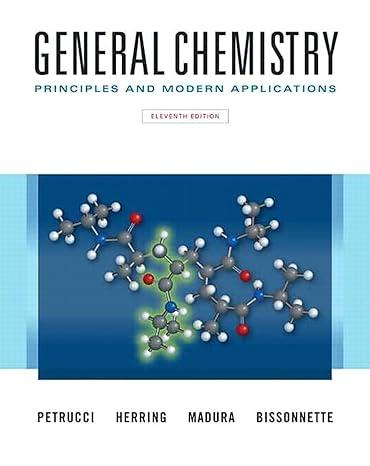(A) If the percent yield for the formation of urea in Example 4-13 were 87.5%, what mass...
Question:
(A) If the percent yield for the formation of urea in Example 4-13 were 87.5%, what mass of CO2, together with an excess of NH3 would have to be used to obtain 50.0 g CO(NH2)2?
(B) Calculate the mass of cyclohexanol (C6H11OH) needed to produce 45.0 g cyclohexene (C6H10) if the reaction has a 86.2% yield and the cyclohexanol is 92.3% pure.
Example 4-13
Billions of kilograms of urea, CO(NH2)2, are produced annually for use as a fertilizer. A ball-and-stick model of urea is shown here. The reaction used is given below.
![]()
The typical starting reaction mixture has a 3 : 1 mole ratio of NH3 to CO2 If 47.7 g urea forms per mole of CO2 that reacts, what is the
(a) Theoretical yield;
(b) Actual yield; and
(c) Percent yield?
Step by Step Answer:

General Chemistry Principles And Modern Applications
ISBN: 9780132931281
11th Edition
Authors: Ralph Petrucci, Jeffry Madura, F. Herring, Carey Bissonnette





